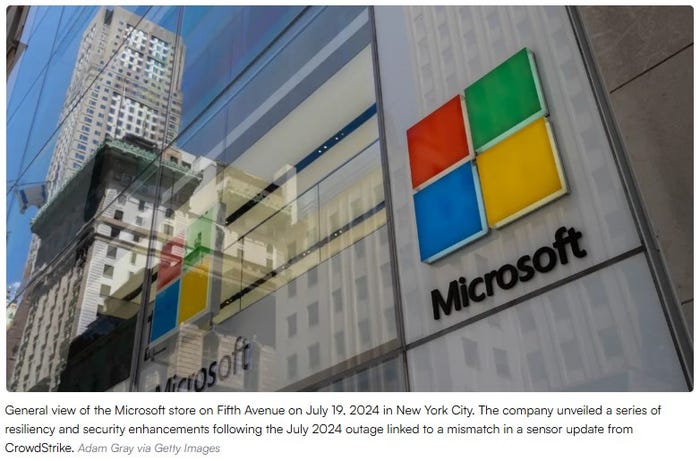LMR use at Hoover Dam
Operating and maintaining hydroelectric production and flood control at one of the world’s largest man-made impoundments requires coordination by radio, but wireless in a utility environment has a unique set of noise problems.
July 1, 2000
Operating and maintaining hydroelectric production and flood control at one of the world’s largest man-made impoundments requires coordination by radio, but wireless in a utility environment has a unique set of noise problems.
Hoover Dam is arguably one of the best examples of a “wonder of modern engineering.” Built during the Depression years and engineered with a slide rule, this structure still serves the American West today, some 65-plus years after its construction. What you may not know is that this one dam is one of the largest generators of hydropower in the world, producing 4 billion kWhr each year. Hoover Dam is also the control center for a vast electrical and water transport system-all connected by radio. If use of radio equipment in an industrial area is problematic, how much more difficult is it in this huge power plant?
While in Las Vegas for IWCE I was able to tour the parts of the dam the public is not allowed to see as part of a tour arranged through the offices of the Bureau of Reclamation. My guide for the tour was Richard Eaker who graciously took time out of a busy day to show me the communications infrastructure of not just Hoover Dam, but of the entire water and power complex controlled from the dam.
The dam itself is massive: 726 feet tall, 160 feet thick at the base with 10-foot thick powerhouse walls. Hoover Dam is part of a larger complex comprising Hoover Dam; Davis Dam and Parker Dam; Lakes Mead, Mojave and Havasu; river level controls and diversion projects that feed water to Nevada, Arizona and California.
Water is released as needed to meet downstream demands for irrigation or domestic water, or when the dam is being operated under flood control criteria. Irrigation water is provided to numerous projects in the lower Colorado River Basin, including: the Imperial Valley Irrigation District and the Coachella Valley Water District (through the All-American Canal system); the Gila, Yuma, Yuma Auxiliary Projects; the Palo Verde project near Blythe, CA; the Colorado River Indian Reservation; and the Central Arizona Project. The water for southern California is diverted at Lake Havasu and transported through the Metropolitan Water District’s Colorado River Aqueduct to the district’s area of use. The water for Arizona is also diverted from Lake Havasu, by the Central Arizona Project aqueduct that carries the water as far as Tucson. Southern Nevada withdraws its water from Lake Mead through the Robert B. Griffith (formerly Southern Nevada Water) Project-which can be seen from the road if you tour the shoreline.
Water levels, flow rates and metering are controlled from Hoover Dam, which has remote sensors covering this vast complex. SCADA data into and out of the complex is carried by a combination of SONET-based communications links and microwave radio between the dams and canals listed above. Local communications is via ordinary LMR radios operated on government VHF/UHF frequencies. A paging system completes the package for the Hoover Dam area.
The dam complex recently installed APCO 25-compliant digital radios for its security forces. Because the dam is a federal facility, security is tight. The digital radios have given good service to date and experience no problems with interference from the density of high-voltage/high-power transmission lines found in the dam complex. Other security systems are in use, providing impressive safety for the complex.
LMR radios are used both inside and outside of the dam itself. Day-to-day maintenance activities are coordinated via the radio system. Both hand-helds and mobiles are part of the total communications “web” used to support the work of producing electricity. Eaker said that the newer radios are good at rejecting interference from high-power transmission lines.
I asked if any in-band or low-power industrial repeaters were in use for the interior of the dam complex, and I was surprised to learn that radio coverage for the complex requires no additional repeaters. Workers who go deep into gallery tunnels or dam inspection tunnels check in via wired telephone. Workers in the powerhouse use hand-held radios to stay in touch. I admit I was puzzled, until the large open window area was pointed out, as well as the fact that the dam is only about 1,000 feet in any direction. Outside workers have no communications problems because the signal is strong enough to cover the area around the dam and the outlying areas.
The paging system for the facility uses voice storage receivers. The transmitter is located in a space at the top of the dam, and an auxiliary yagi antenna is pointed down to the powerhouse areas to ensure full coverage. (See inset photo on page 32.) The communications team is working on a wireless microphone system to support the public tours (the tour guides currently plug into amplifier jacks at each tour stop).
Communications to downstream dams is carried by a digital microwave system. This system also carries SCADA information for water flow rates, water levels and turbidity as part of the overall water management effort. Solar panel/battery bank combinations power the microwave and repeater sites. This is a logical power source given the sunny weather found in the desert southwest. The downstream dam complex uses the same frequency scheme as Hoover Dam, so, as the technicians and workers travel between sites, they are in constant contact with the main control center.
The technical staff maintains all of the communications equipment used in the vast complex. I was surprised (again) to see a pay telephone sitting on the workbench while we looked over the compact shop area. Eaker explained that his staff maintains the radio systems, the telephone switches, SONET gear, SCADA system components and sensors, SATCOM radios and just about anything else (like the payphone) that the staff uses to communicate.
All of this is spread over a wide area and maintained with a small staff. Eaker pointed out that equipment selection was rigorous and reliability was important. Vendor selection is now made at the local level, so he has been able to achieve good commonality to reduce the number and type of spares required to keep things running. The remote-control capacity of the complex allows the use of a surprisingly small maintenance staff.
The Hoover Dam complex is federally owned but does not cost the taxpayers a dime. The original cost of the dam, some $165 million, has been repaid to the U.S. Treasury, with interest, and operating costs come from the sale of the hydroelectric power. Equipment purchases and upgrades, including the communications systems, are approved by a board representing the companies that purchase the power from the complex. This centralized purchasing, coupled with access to General Services Administration contracts, allows Eaker to stretch the dollars spent in upgrades or new equipment.
With a vast complex to maintain, costs to control, floods to prevent and massive amounts of power to generate and deliver-the communications staff at Hoover Dam has an operation that they can take pride in every day. The contribution of the clean hydropower to a clean environment is a pleasant by-product of the flood control and irrigation effort of the Bureau of Reclamation. Radio equipment is chosen on the basis of reliability and compatibility-the ability to work in dense ac electrical fields is an indication of the quality of the product used.



